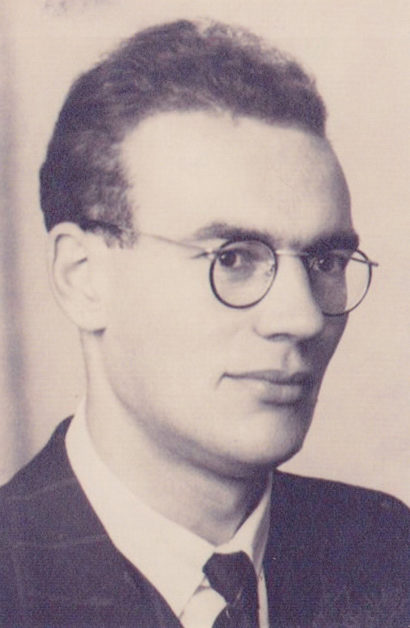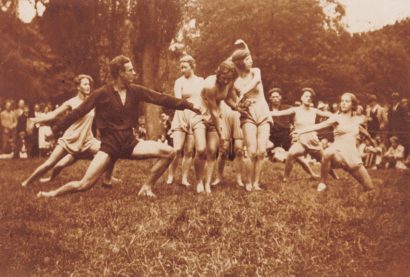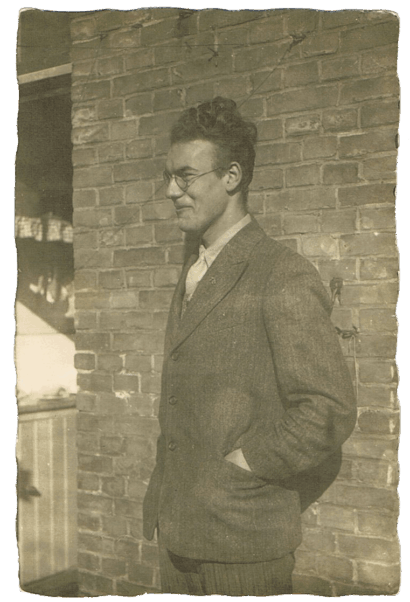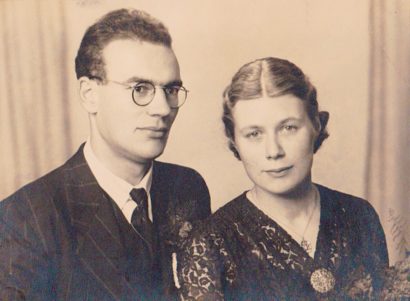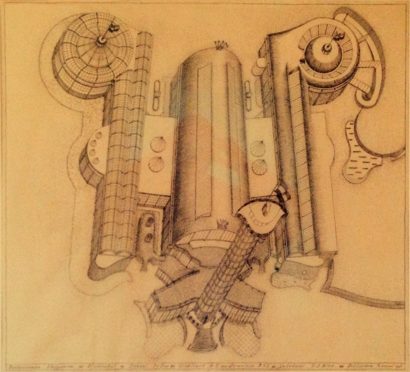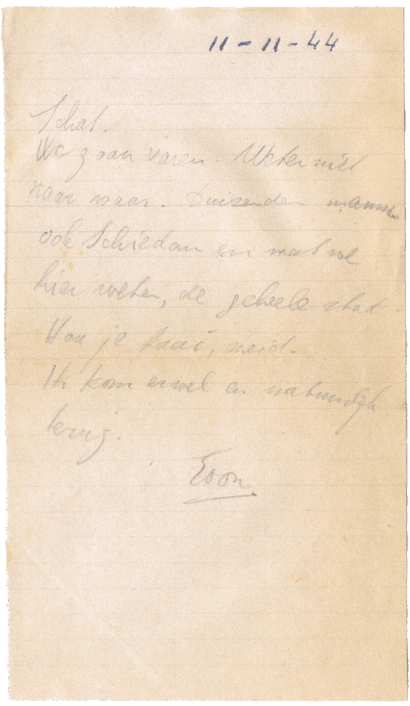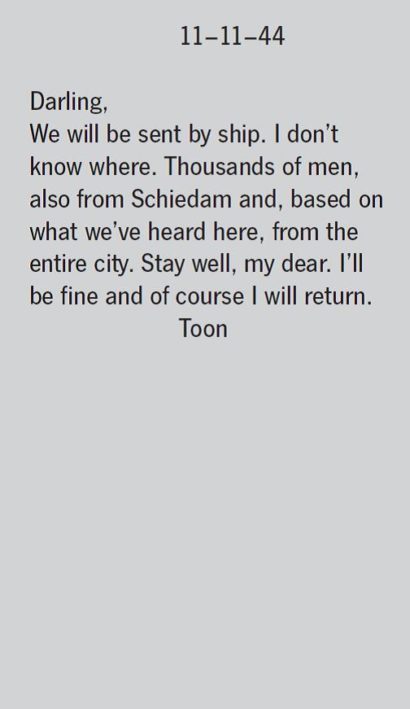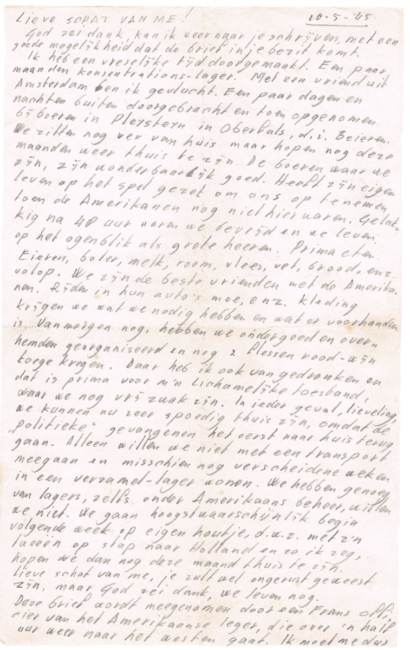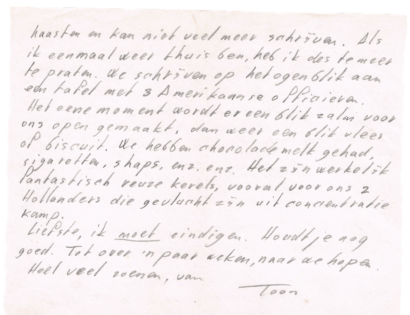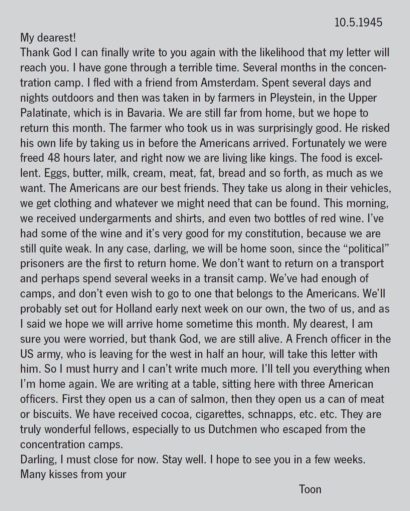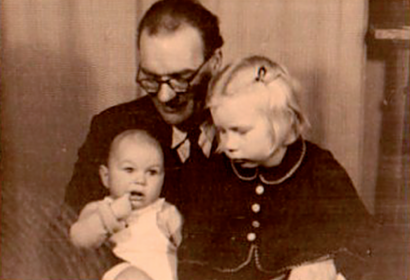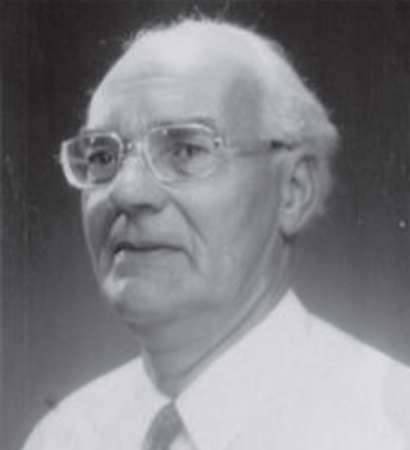Antoon Bink
born March 2, 1914
![]()
Antoon Bink, detail, 1940 (private collection)
Six Months of Uncertainty
Raised in a working-class family with four siblings, Antoon Bink was forced to quit high school to work. He first trained as a carpenter in his hometown, the city of Haarlem in northern Netherlands. In Haarlem, he also joined the social democratic Workers’ Youth Central, where he met his later wife, Gonny. In the evenings, he took classes to become a technical draftsman. In 1940, he obtained a position in a Rotterdam architectural firm, thus securing his livelihood. Antoon Bink and Gonny Peschar were now able to marry.
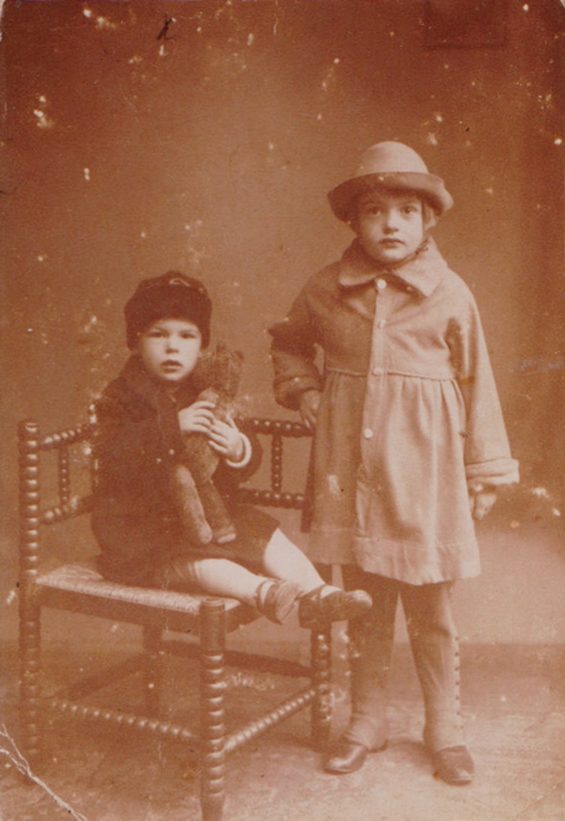
Antoon Bink (left) and his sister Netty, ca. 1916 (private collection)
![]()
Antoon Bink, ca. 1935 (private collection)
Antoon Bink was active with the social democratic youth movement, the “Arbeiders Jeugd Centrale“ (Workers’ Youth Central), for which he organized cultural events. He was also a passionate musician and took part in amateur theater productions. This photograph shows Antoon Bink with a dance troupe of the “Arbeiders Jeugd Centrale“.![]()
Antoon Bink, ca. 1937 (private collection)
![]()
Wedding photo of Antoon Bink and Gonny Peschar, October 1940 (private collection)
![]()
Antoon Bink’s draft for the Rivièra Hall at the Blijdorp zoo in Rotterdam, 1941 (private collection)
The zoo was destroyed in the 1940 bombing of Rotterdam. Antoon Bink worked for a Rotterdam architectural firm, for whom he drew up the plan for this new building.
In May 1940, the German air force bombed Rotterdam. The entire city went up in flames. From that point on, Netherlands was an occupied country. The Workers’ Youth Central was forced to move underground. On November 10 and 11, 1944, the largest wave of arrests under the occupation took place. The Germans deported more than 50,000 people deemed able to work, among them Antoon Bink. After several weeks on route, he arrived at Siegmar-Schönau in Saxony, where he carried out forced labor for the Auto-Union automobile manufacturer. In February 1945, Antoon Bink was denounced for sabotage, arrested by the Gestapo, and jailed in Chemnitz. On March 27, 1945 he was sent to the Flossenbürg concentration camp. At Flossenbürg, Antoon Bink again worked as a forced laborer for the armaments industry, this time for Messerschmitt. Less than four weeks after his arrival, the camp was dissolved. Antoon Bink and a friend were able to escape from the death march in an area south of Flossenbürg. They hid in the forest for several days. Finally, hunger and cold drove them to seek refuge with a farmer near the town of Pleystein, where they remained hidden for two days. In early May, the US troops arrived. The war was over. Antoon Bink was finally able to send word to his wife, who was expecting their first child.
![]()
Letter by Antoon Bink to his wife Gonny, November 11, 1944 (private collection)
![]()
After his arrest, an unknown person helped Antoon send his wife Gonny a short message.
![]()
Letter by Antoon Bink to his wife Gonny, May 10, 1945 (private collection)
![]()
This was the first letter from Antoon Bink in more than six months. On May 31, 1945, he returned to Rotterdam.
In late May 1945, Antoon Bink returned home. Shortly thereafter, his daughter Marijke was born. His son Eric followed in 1950. Antoon Bink spoke little of his time as a forced laborer. For many years afterward, he continued to suffer from the pleurisy he had contracted in the concentration camp. As a civil engineer, Antoon Bink took part in the reconstruction of Rotterdam. He remained a lifelong Social Democrat, taking part in numerous social projects, promoting public housing, and serving as a leading member of his trade union. He died following a serious illness in 1981.
![]()
Antoon Bink with his son Eric and his daughter Marijke, Rotterdam 1950 (private collection)
![]()
Antoon Bink, 1974 (private collection)
